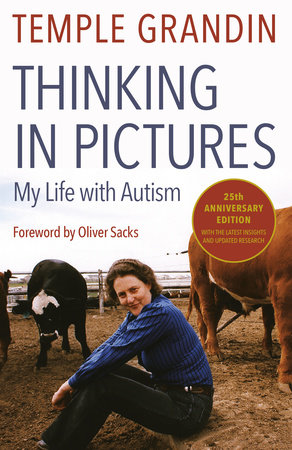An Introduction to Synesthesia
Have you ever wondered why feeling sadness is sometimes called being “blue?” Or have you felt someone’s look as “icy?” These are everyday examples of a condition that most of us don’t experience literally. Synesthesia means “union of the senses,” and synesthetes (roughly four percent of us) are just wired differently, whether we know it or not!
What is an example of synesthesia?
There are many kinds of synesthesia, and every person’s experience is different. Broadly, there are projective synesthesia and associative synesthesia.
Projective synesthesia is when someone literally sees a color or shape, feels an object, or hears something that is not there in response to a stimulus. Those with projective synesthesia might see letters and numbers as different colors.
Associative synesthesia is when someone links the stimulus very strongly with a color or shape or sound or even a concept, but does not literally experience it. Those with associative synesthesia might strongly feel that the letter “Q” is extremely shy and cannot be near the boastful “R.”
There are 60 to 80 types of synesthesia, all with different symptoms. Some involve tasting words, seeing sounds, hearing colors, and feeling the sensation that another person feels. While many synesthetes consider their condition a gift, some forms of synesthesia can be challenging.
- The most common form of synesthesia is grapheme-color synesthesia, where letters and numbers are associated with specific colors. These associations are unique to each synesthete: some may deem Thursday a yellow day, while another will argue that that day is obviously purple.
- Chromesthesia, another common form, occurs when certain sounds like a car honking can trigger someone to see colors. Painters have famously drawn inspiration from music, with their color palettes precisely calibrated to musical notes and tones.
- Mirror-touch is when someone feels the same feelings and bodily sensations as another, for example a bee sting or a hug. This results in very high empathy, sometimes to the point of extreme overwhelm and suffering. Nonetheless, some healing professionals, including body workers and physicians, are known to make skillful use of this unique gift.
- Among the least common forms is swimming-style synesthesia, which evokes strong color experiences when someone sees or thinks about a swimming style—breaststroke, crawl, butterfly, etc.
- Rarer still is lexical-gustatory synesthesia, a condition in which words have tastes. For these special people, conversation literally rolls off the tongue.
- Auditory-tactile or “hearing-touch” synesthesia is extremely rare. In this form of synesthesia, sounds produce a tactile sensation on certain areas inside and outside of the body. These perceived sensations can be experienced as pleasant, but on other occasions, the sensations may be distracting, uncomfortable, or painful, like bee stings on the skin.
- Misophonia (literally, “hatred of sound”) is a condition in which sounds such as chewing, lip smacking, or loud breathing trigger strong negative emotions like disgust and anger. Some believe this condition to have roots in synesthesia.
Is synesthesia a mental illness? How do I know if I have synesthesia?
Psychological research indicates that synesthetes as a group are not mentally ill; they test negative on scales that check for schizophrenia, psychosis, delusions, and other disorders. In fact, several researchers have shown that synesthetes can perform better on certain tests of memory and intelligence.
A growing body of evidence shows that synesthesia is more common among creative types and that some of our most imaginative minds are synesthetic. Research shows that people with synesthesia tend to have more vivid mental imagery than non-synesthetes. Some say this is related to greater connectivity in the brain.
A few of the many famous artists with known conditions of synesthesia include Vincent Van Gogh, Richard Wagner, Kanye West, Billie Eilish, Duke Ellington, Wassily Kandinsky, Billy Joel, and Marilyn Monroe.
There’s no clinical diagnosis for synesthesia, but it’s possible that testing will show associations between senses. True synesthesia is consistent. That is, given a series of tests, one person will experience letters as always the same color, or sounds as always the same shape, in the same way, over time. Different people, however, may have completely different associations.
How common is synesthesia? Is synesthesia a form of autism? What causes synesthesia?
While synesthesia is not common, affecting perhaps 4,000 out of 100,000 people, as many as 20 percent of people with autism experience some form of synesthesia. Although there are many unanswered questions about the relationship between synesthesia and specific autism traits, the two conditions share brain connectivity patterns and possibly genes, suggesting they have common biological underpinnings.
Not all types of synesthesia have been documented or studied, and the cause remains unclear. Synesthesia often appears during early childhood. Research has shown signs of a genetic component; there is some debate over whether all newborns have some degree of synesthesia, or if it’s a special perception of the world that only some individuals share.
In rare cases, synesthesia can develop later in life, either temporarily from the use of psychedelic drugs, meditation, and sensory deprivation, or permanently, from head trauma, strokes, or brain tumors. Some forms of synesthesia may be deliberately learned. Women are more likely to become synesthetes than men.
Many synesthetes grow up without knowing anything is “wrong” with their sense perception. They recognize their synesthesia early in life, but don’t know that the way they experience letters, sounds, colors, or tastes is unique. Usually the condition is not a problem—indeed, many synesthetes treasure what they consider a bonus sense!
You Might Also Like Our Content on These Topics: Misophonia











